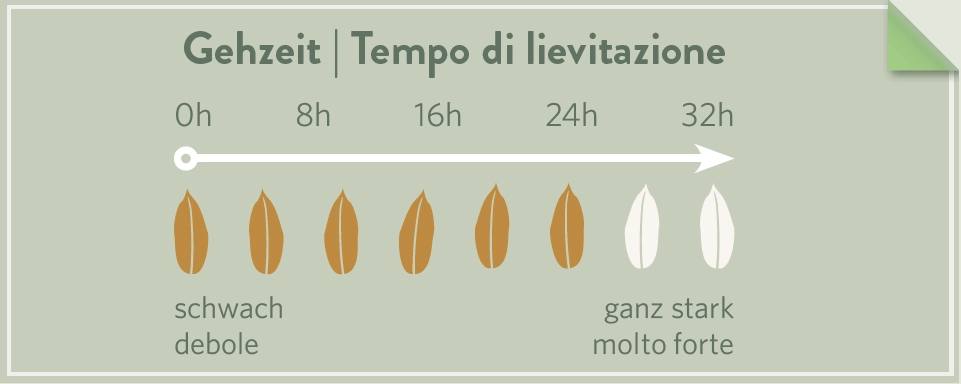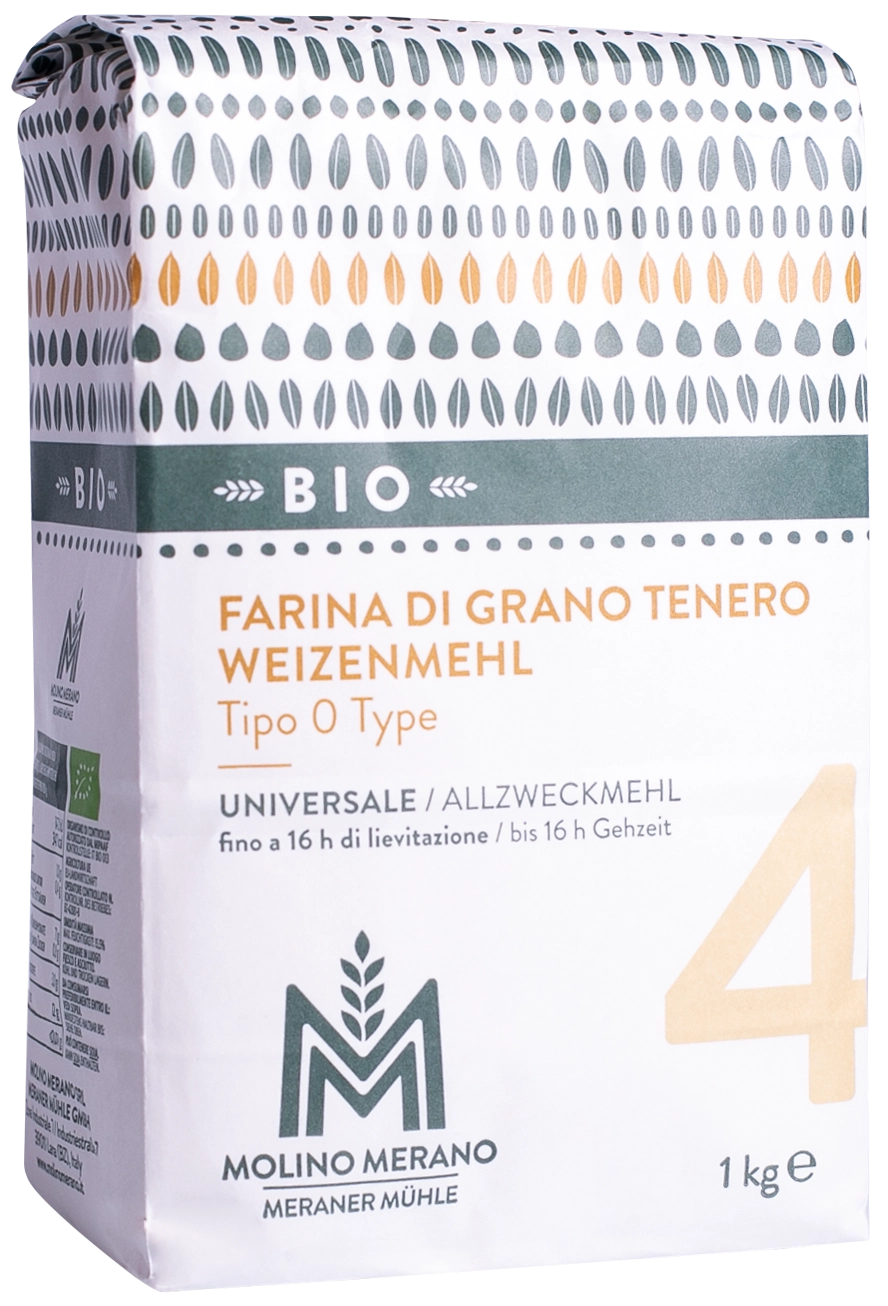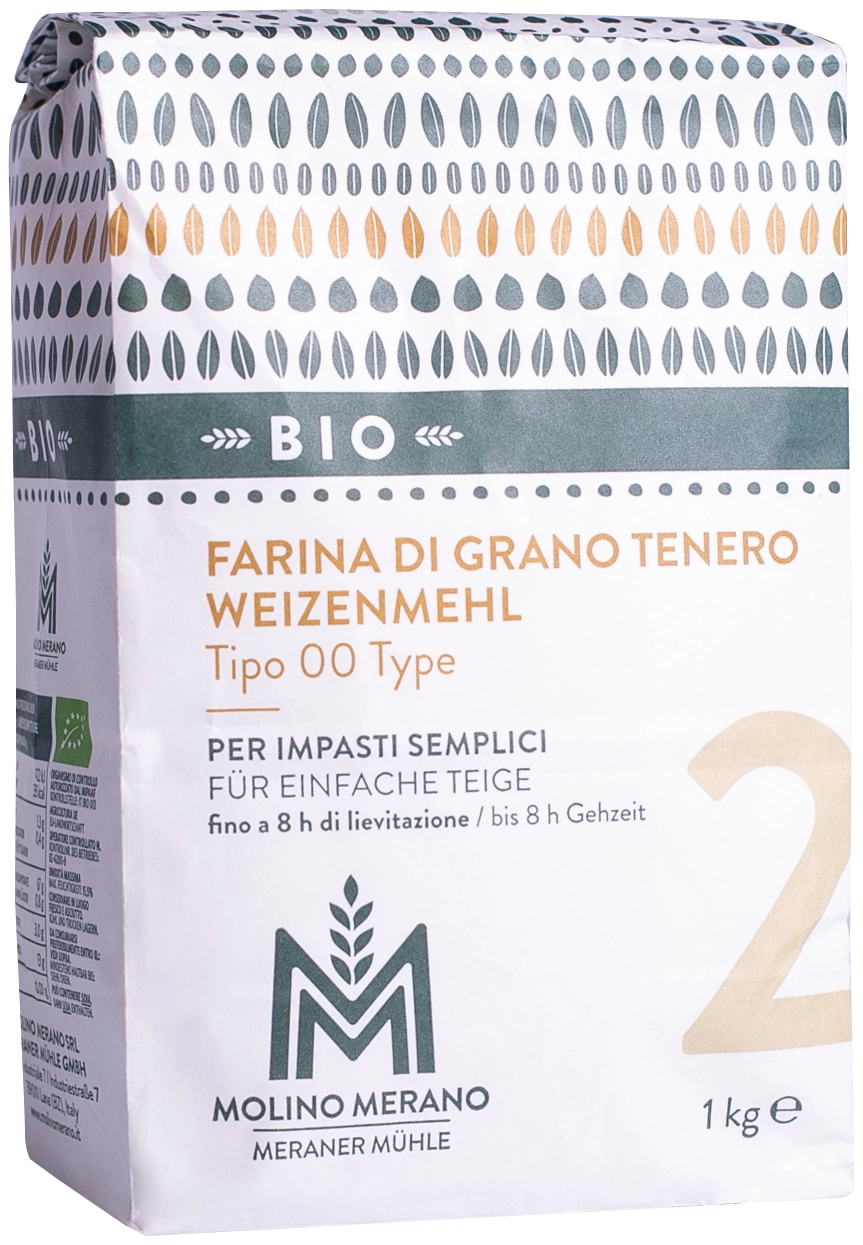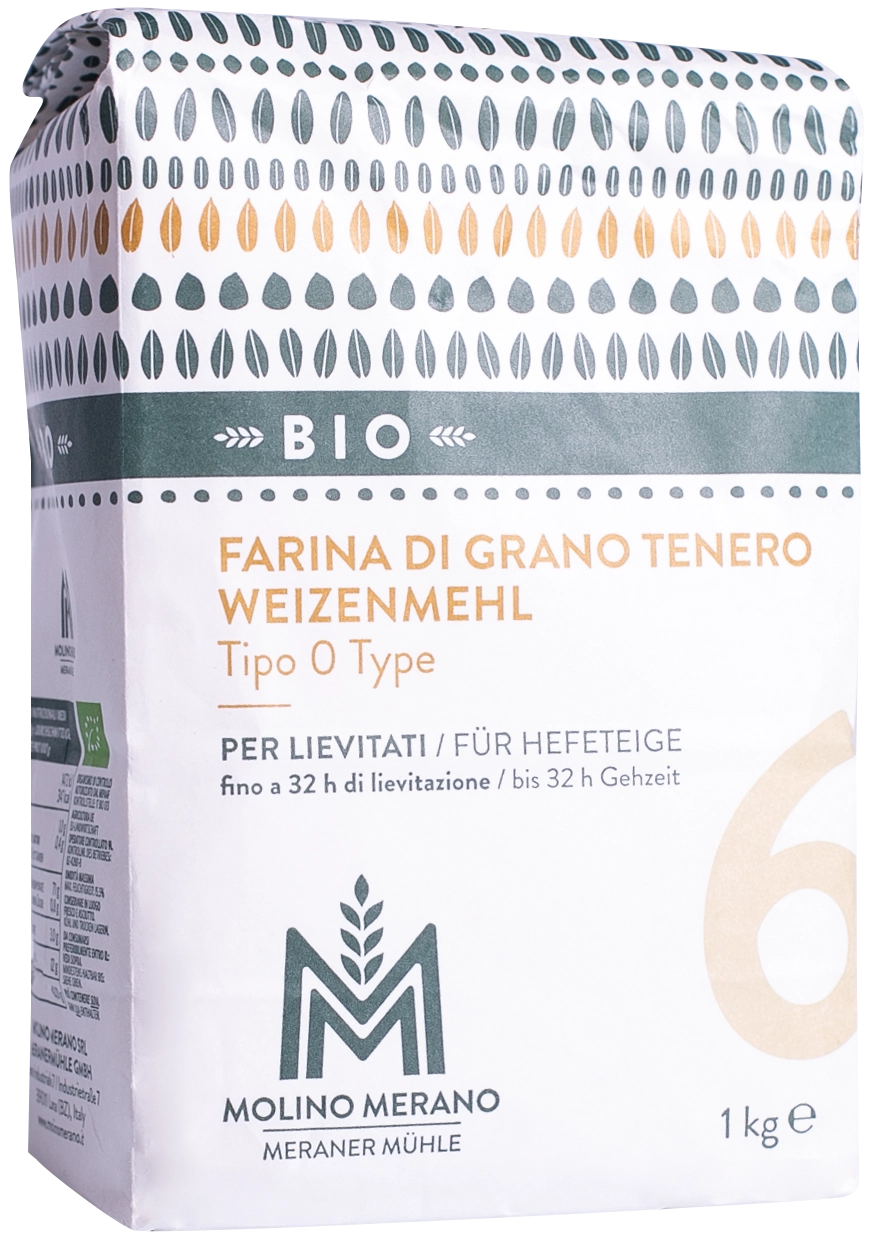Flour strengths

Yes, these strengths do exist! And, not all wheat flour is the same!
A strong flour absorbs a high percentage of water and lends itself well to long leavening and doughs rich in fat (with butter, sugar, etc.). Soft wheat flour absorbs little water and can be used for cakes and biscuits that require short or no leavening times.
Here in Italy, information on the strength of wheat flour is indicated by the so-called ‘W’ value, which is identified by laboratory analysis. This value is closely related to the quantity and quality of proteins (gluten) present in wheat. Strong wheat flour has a higher percentage and consequently has a stronger gluten mesh.
A strong flour absorbs a high percentage of water and lends itself well to long leavening and doughs rich in fat (with butter, sugar, etc.). Soft wheat flour absorbs little water and can be used for cakes and biscuits that require short or no leavening times.
Here in Italy, information on the strength of wheat flour is indicated by the so-called ‘W’ value, which is identified by laboratory analysis. This value is closely related to the quantity and quality of proteins (gluten) present in wheat. Strong wheat flour has a higher percentage and consequently has a stronger gluten mesh.
At Molino Merano the strength of the flour is indicated by the nuances of the grains on the packaging:
- Soft wheat flour nr. 2 is for leavening times up to 8 hours (biscuits, plumcake, pasta, omelette etc.)
- Soft wheat flour nr. 4 is for leavening times from 8 to 16 hours (brioche, pizza, focaccia, bread etc.)
- Soft wheat flour nr. 6 is for leavening times from 16 to 32 hours (brioche, pizza, bread or rich yeast doughs with butter, sugar etc.)
Besides the "flour strengths" described in this article, there is another important characteristic of flour - the so-called "type". Please find all about this topic here.





